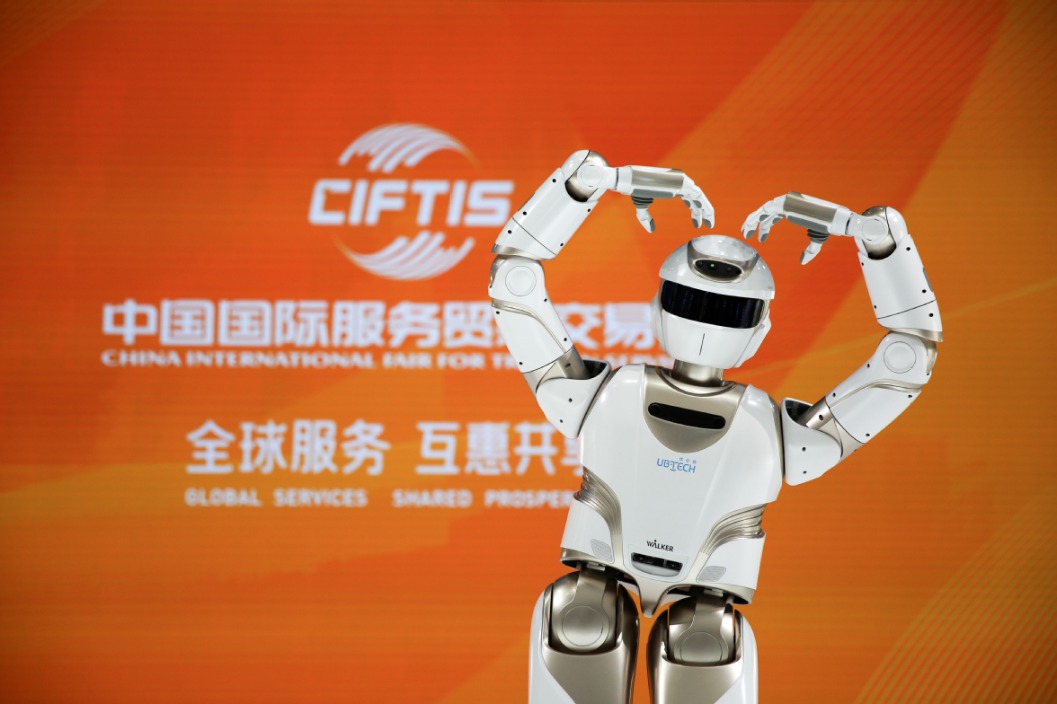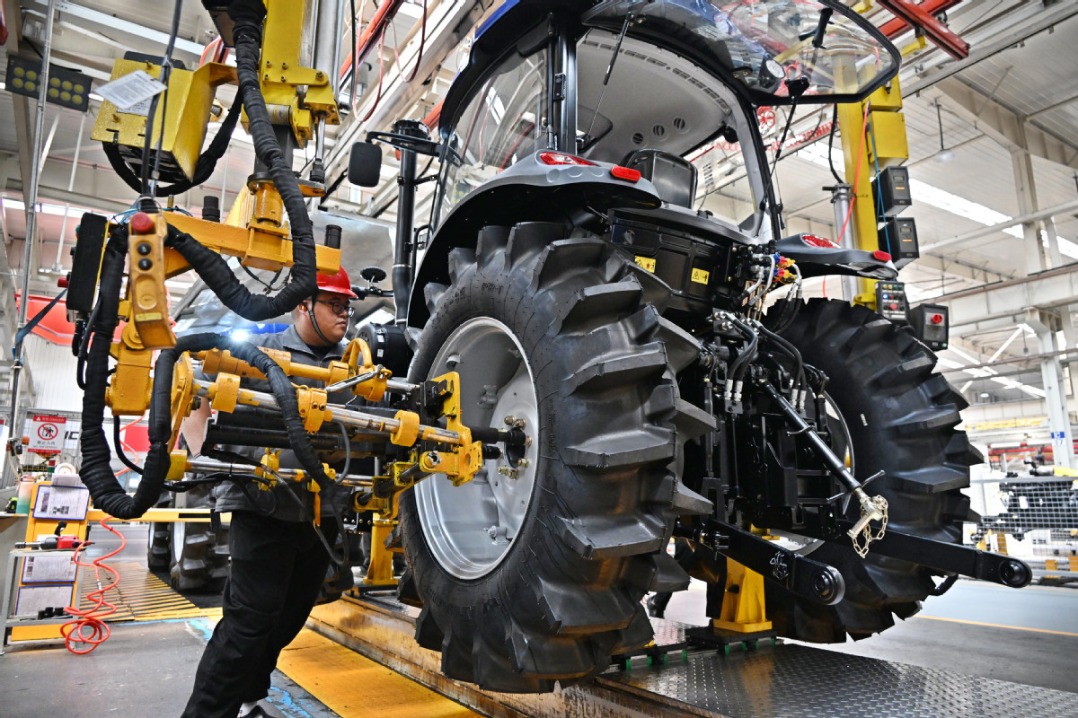What 'overcapacity'? Nation playing key role in global economy


In the midst of an ongoing trade dispute, the United States has been persistently raising concerns over the so-called overcapacity in China.
US Treasury Secretary Janet Yellen recently claimed that China's new energy sector suffers from overcapacity, leading to global price distortions and adversely affecting US businesses and workers. However, this viewpoint is unfounded and lacks substantial evidence.
First of all, in the era of economic globalization, the prices and sales of goods are determined by global market forces.
The concept of green development has become an inherent requirement of China's modernization. China has laid out wide-ranging targets to mitigate climate change — its "dual carbon" goals aim to peak carbon dioxide emissions before 2030 and achieve carbon neutrality before 2060.
Global consensus on the significance of green development has been growing steadily. It is widely acknowledged that transitioning to renewable energy sources and fostering the development of green industries are key historical trends that will shape the future of the global economy.
China's success in green development can be attributed to its sustained focus on technological innovation. The country has continuously improved its green supply chain system, ensuring a robust and competitive market environment for the rapid growth of the new energy industry.
In 2023, China's exports of "new three "products — new energy vehicles, photovoltaic products and lithium batteries — were worth 1.06 trillion yuan ($147 billion), up nearly 30 percent year-on-year.
As the world recognizes the need for sustainable solutions, China's efforts in promoting new energy imports and exports, as well as green technology transfers, have played a crucial role in facilitating the transition toward a greener world.
The global new energy industry is currently facing a shortage of high-quality production capacity rather than an issue of "overcapacity".
According to estimates by the International Energy Agency, the global demand for NEVs is projected to reach 45 million units by 2030, a staggering 4.5 times the levels recorded in 2022.
Similarly, by 2030, the global photovoltaic sector is expected to witness a fourfold increase compared to the levels in 2022 in new installed capacity, with the demand by 2030 reaching 820 gigawatts.
Contrary to concerns about overcapacity, the current global production capacity in the new energy sector is far from sufficient to meet potential market demand. This observation holds true not only at the global level but also within China's domestic market.
While China has been a leading exporter of new energy products, there remains significant untapped demand in its vast urban and rural areas. This untapped demand presents a substantial and enduring market space, ensuring stable and long-term demand for China's new energy products. Consequently, the production capacity in China's new energy sector is also far from excessive.
The notion that China extensively exports new energy products at low prices is not borne out by the facts. In fact, Chinese NEVs are generally sold at higher prices overseas; yet, their sales volume continues to grow rapidly.
These observations indicate that the pricing and sales of new energy products are determined by the dynamics of international market supply and demand, reflecting the outcomes of a fully competitive market economy.
In addition, a fundamental economic principle — the principle of comparative advantage — emphasizes the benefits of specialization and trade. However, deviating from this principle can have adverse effects on consumer welfare.
In market economies, imbalances between supply and demand are a common occurrence. It is not uncommon for any country or region to experience overcapacity in certain products. (This is not to say that China currently has overcapacity in the new energy sector.) However, market competition and technological advancements naturally eliminate excess capacity that lacks market demand.
China's new energy sector has showcased its global leadership in quality production capacity, as evidenced by the remarkable export figures and market share dominance achieved in key segments.
In 2023, China's exports of electric vehicles exceeded 1.77 million units, marking a staggering 67 percent year-on-year growth. Additionally, the country currently holds over 60 percent of the global power battery market share.
The early establishment of the new energy industry, the significant effects of industrial clusters, substantial investments in research and development, improved cost management efficiency, stable and efficient logistics, and the driving force of the domestic market have all contributed to the rapid growth of China's new energy sector.
This division of labor is a result of Chinese companies' own efforts in the fiercely competitive global market, rather than reliance on low-cost dumping or industrial protectionism.
In contrast to China's focus on technological innovation and quality production, the US government has been vigorously promoting a "100-percent Made in America "narrative. In November 2021, the Biden administration signed the largest infrastructure bill in half a century, amounting to a stupendous $1 trillion.
The Biden administration aims to incentivize US businesses to use domestically sourced materials through subsidies, with the intention of boosting the domestic manufacturing industry. However, this approach contradicts the principles of global comparative advantage and is likely to exacerbate inflationary pressures in the US while reducing consumer welfare.
The US has found itself embroiled in hypocrisy when it comes to its approach to green energy subsidies. On the one hand, the US government has implemented large-scale subsidies to promote the development of new energy sources.
On the other, it has been quick to criticize China's subsidies for green energy, disregarding the facts and invoking the notion of "fair competition". Such actions not only undermine China's rights to green development but also hinder the progress of environmental sustainability worldwide.
Observers have begun to see through the US government's strategy of advocating free markets when it is competitive, only to resort to protectionism when its own competitiveness wanes.
The rise of China's advanced manufacturing capabilities has posed a significant challenge to the US' leading position in the advanced manufacturing sector. The claims of China's overcapacity in the new energy sector are seen as nothing more than an excuse for the US to implement further trade protectionist policies, employing old rhetoric to hinder China's technological advancement.
In the current era of green development, many countries, including China, are facing challenges in industrial restructuring and labor adjustments. The advancement of new energy technologies is driving a profound realignment of global production and supply chains. With global competition intensifying, the redistribution of resources and interests is an inevitable outcome of market forces.
China's rapid development in the new energy industry has presented a substitute effect on the global market shares of developed countries like the US, resulting in a shift from trade surplus to deficit in this sector for some nations. The growth of China's new energy sector has reshaped global market dynamics, raising concerns among certain countries about their competitiveness and market share.
Conflicts and differences in international economic and trade cooperation should be managed properly based on the fundamental principles of fair competition and open cooperation within the framework of market economy and in accordance with the rules of the World Trade Organization. It is imperative for countries to collectively uphold the stability of global trade order and the resilience of production and supply chains.
The US' approach of politicizing trade issues, including concerns related to production capacity and other economic matters, has sparked significant trade frictions among major nations. This attempt to disrupt China's crucial role in maintaining stability within the global production and supply chains goes against the principles of market economy.
Moreover, it not only hampers the development of domestic industries but also poses a threat to the stability of the global economy, and severely undermines the realization of the global climate agenda.
In fact, China welcomes the US to engage in fair competition in the international emerging sectors. China has fully lifted foreign investment market access restrictions in the manufacturing sector, allowing countries to fully share the development opportunities of China's vast market, thereby enhancing the competitiveness of both the Chinese and global markets.
China has emerged as Tesla's second-largest market globally, with the US carmaker selling over 600,000 vehicles in China in 2023, representing a year-on-year growth of over 37 percent. The Chinese new energy sector is taking concrete actions to fulfill the global climate agenda.
The writer is a research fellow of the National Academy of Development and Strategy at Renmin University of China, and vice-president of the School of Economics at the university. This article is a translation of his op-ed first published on the official WeChat account of the China Macroeconomy Forum, a think tank.
The views don't necessarily reflect those of China Daily.
- China's green automakers — champions of smart mobility
- Nation's tech sought out by automakers from abroad
- NEV makers move fast in China leveraging innovation, cooperation
- Improving key indicators signal positive outlook for China's economy
- Envoy: China's South-South advocacy boosts trade, investment




































